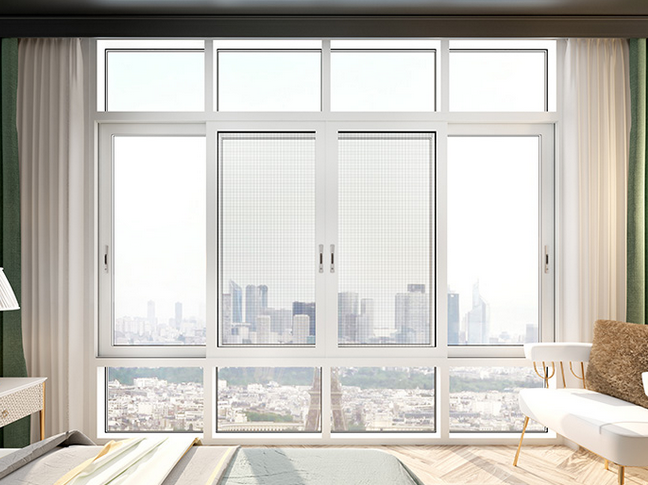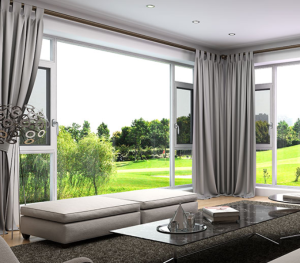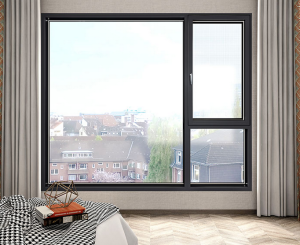Casement Window vs Sliding Window: Which One’s Better for Your Home?
When you’re building or renovating your home, choosing the right windows can feel like a small detail. But in reality, windows play a big role. They affect how your home looks, feels, and even how much energy it uses. Two of the most popular window styles today are casement windows and sliding windows. Both look great and serve unique purposes. But which one should you go for?
Let’s break down the differences between these two popular types and help you decide what’s best for your space.
What is a Casement Window?
A casement window is attached to its frame by side hinges and opens outward like a door. You usually open it with a crank handle. Casement windows are known for giving excellent airflow and sealing tightly when shut, making them energy-efficient.
These windows work especially well in areas where ventilation is important. For example, over kitchen sinks or in smaller rooms. They also give your home a modern and clean-lined look.
What is a Sliding Window?
Sliding windows operate horizontally. One pane stays fixed, while the other slides open on a track. They don’t stick out inside or outside, which makes them perfect for tight or busy areas like walkways, patios, and hallways.
Sliding windows are easy to use, give a wide view of the outside, and have a sleek, modern appeal.
Casement vs Sliding Window – How They Compare
Ventilation and Airflow
Casement windows open all the way, which means more fresh air comes in. You can even angle them to catch breezes. That makes them a great choice for rooms that need airflow.
Sliding windows only open halfway, since one panel stays fixed. While they still allow ventilation, they don’t match casement windows in airflow.
Casement windows win for ventilation.
Energy Efficiency
Casement windows are known for their excellent sealing. When closed, they press tightly against the frame, which reduces drafts and heat loss. That means better insulation.
Sliding windows can let in a little air if the track gets worn or dirty, although modern models are improving in this area.
If energy savings are a priority, casement windows are the better choice.
Ease of Use
Sliding windows are very simple to operate. You just push the sash, and it glides open. They’re great for people of all ages.
Casement windows use a crank, which can sometimes be awkward to reach or turn, especially for older adults.
For ease of use, sliding windows are more convenient.
Space-Saving Design
Casement windows open outward, so you need to think about what’s outside. They’re not the best option near bushes, walkways, or patios.
Sliding windows don’t swing open at all. They stay flush with the wall, saving space and keeping things simple.
Sliding windows take the lead when space is limited.
Security Features
Casement windows are very secure. Their lock is built into the frame, and they’re hard to force open from outside.
Sliding windows can be secured with locks, but their design is slightly more vulnerable unless extra locks or security bars are added.
Casement windows offer stronger built-in security.
Cleaning and Maintenance
Casement windows are easier to clean because they swing open wide, allowing access to both sides of the glass from inside the house.
Sliding windows can be tougher to clean on the outside unless they have lift-out or tilt-in sashes. Their tracks also collect dust and require regular cleaning.
Casement windows are easier to maintain in the long run.
Cost and Budget
Sliding windows usually cost less. Their design is simpler and requires fewer parts. If you’re building on a budget, sliding windows can help save money.
Casement windows are more expensive but offer better performance and durability. Over time, the energy savings can make up for the higher upfront cost.
For budget-conscious homeowners, sliding windows offer a good deal. For those seeking performance, casement windows are worth the investment.
When to Choose Casement or Sliding Windows
Both styles work great in different situations. You might even want to mix and match in your home.
Casement windows are great in bedrooms, kitchens, or any place where you want fresh air and energy savings. Their design fits both classic and modern homes.
Sliding windows are excellent in wide wall spaces, corridors, and areas where you don’t want anything sticking out. They’re great for small homes or modern designs.
FAQs
Which window is more durable — casement or sliding?
Both are durable if properly installed and maintained. However, casement windows may last longer in rough climates because they seal better and resist drafts.
Do sliding windows let in less air than casement windows?
Yes. Sliding windows don’t open fully like casement windows do. That means they allow less airflow.
Are casement windows harder to operate over time?
If the crank mechanism is used frequently and not maintained, it might wear out. But modern systems are much more durable than older ones.
Can I use both types of windows in the same house?
Absolutely. Many homeowners use a mix to combine airflow, design, and budget benefits.
Final Thoughts
There’s no one-size-fits-all answer to the casement vs sliding window question. The right choice depends on your room layout, airflow needs, style preferences, and budget. Casement windows give you better ventilation, insulation, and security. Sliding windows are sleek, budget-friendly, and easy to use.
Whether you’re building from scratch or upgrading your existing home, make sure you choose windows that match your lifestyle and home’s structure.
Looking for expert advice? Get in touch with us to explore personalized window solutions that fit your needs perfectly.




